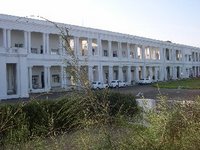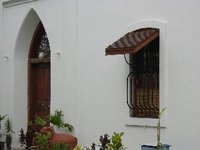
It is a system of carved elements - stone slabs, beams, columns - pieces put together, the putting together - a carefully pre-planned process. Stone carvers - the artists, the artisans working in groups to deliver the pieces as required, with every piece cut, carved, to make a railing, to turn it to make a junction or to break the monotony of a symmetrical façade.

Stone blocks cut and carved to make an arch, a doorway, a jharokha, brackets that support a circular jharokha, brackets that are radiating out from a point and therefore vary in their sizes, but must be carved to precision to take their place away from the courtyard of the carver's house, in the walls of the palace.
And today, centuries later, can Bombay, Calcutta or Delhi boast of a harmonious city fabric inspite of the progress made in construction technology? Should we not rethink about the city as a whole and apply the technology to the whole rather than to a part, a sole building? We make individual buildings with our technological inputs. Can we not energise our entire city system which may produce a building that reflects the common ideology? Can we use stone again? Can we carve again? We can, but perhaps at greater expense and therefore we may look for a less expensive alternative.

Can precast concrete elements take the place of stone slabs, beams, columns, brackets, railing? If we were to analyse the system of building in Jaisalmer and devise thereon a system for use today, we will perhaps have an answer to a better city fabric woven into the other townscapes and reflecting the current mind structure too.
Urban morphology in India has been studied before. Architects and planners know today how courtyards, streets and built-form come together to make Indian cities. Contemporary Indian architects are designing townships for industrial empires. Many of these reflect the Indian norms for City Planning, yet the built-form is a collection of units that are in concrete, and sometimes alien.
If we could merge the appropriate technology being researched and practised in some parts of India with these early canons of planning to generate urban patterns of relevance and create an aesthetic that one can relate to, we will again have cities and townships that we can be proud of.







































